SPARWASSER HQ / LISE NELLEMANN
invites
Big Hope
Heman Chong
Dellbrügge & de Moll
Karl Holmqvist
Lasse Lau & Kenneth A. Balfelt
Susan Philipsz
Reinigungsgesellschaft
Michael Stevenson
archive "Consequenses of summer"
archive "Old Habits Die Hard"
in
Berlin North - Contemporary Artists from the Nordic Countries
Hamburger Bahnhof, Berlin
January 31st to April 12th 2004
CONTENTS
About the exhibitionProgram of the exhibition
Artists and projects
Little manifesto
Introduction from the catalogue
Conversation with Lise Nellemann
The architecture of the exhibition
Links to featured artists and projects
Sparwasser HQ during 'Berlin North'
Photo documentation from the exhibition
About the exhibition
This exhibition is an example of the artist´s involvement in communicating and distributing artistic ideas by establishing models of self-representation.
As a result of this involve ment, artists reflect on their own role as either a guest or a host within the project.
Building upon the notion of "open source", sharing ideas and
knowledge, Sparwasser has invited other artists and art related
people to contribute to the conceptual framework.
This is an attempt to leave behind the cliche of the self-sufficient, introverted genius, that constitutes our perception of the artist since modernism.
In the process of researching on collectives and mapping of networks, the issues of self-organization, self-representation and alternative models of economy are raised.
Besides the exhibition project Sparwasser HQ/ Lise Nellemann organizes a program of meetings and dialogues in the auditorium of Hamburger Bahnhof.
Program of the exhibition
| February 15th | |
| 3:00pm | in the exhibition room: Sparwasser HQ and the ten invited projects are presented by the artists. |
| 5:00pm |
in the auditorium: |
| February 26th, in the auditorium | |
| 6:00pm | "Disobbedienti" (54 Min., 2002) |
| 7:00pm | "This is what democracy looks like!" (38 Min., 2002) |
| 7:45pm | discussion with Oliver Ressler (Artist from Wien) |
| 8:45pm |
Tone O. Nielsen (Independent Danish
Curator from Copenhagen/L.A.) in the auditorium |
| April 3rd | |
| 3:00pm | Eoghan McTigue (Artist from Belfast. Lives in Berlin) Artists Talk |
| 5:00pm | Discursiv Picnic, in the exhibition room |
| 8:00pm | Spore
Sac / Daniel Kluge (sonic gig) in the auditorium (Artist (Munich) from the exhibition FRISCHESPORES&MOLEKULES, March 17th - April 10th 2004 in Sparwasser HQ), curated by Heman Chong |
Artists and projects
Big
Hope
(2m x 2m live game area)
As counterpoints to the overwhelming dominance of the logic of
global
capitalist economy and in addition to their ongoing project "Talking
About
Economies", the artist group "Big Hope" have built
a large scale game to be "played" by people visiting
the exhibition space. Through engaging with the piece by making
brief interactions and contributions that represent symbolically
the ideas of various alternative economic systems, the game's
content can be sustained and expanded for future "players".
Susan
Philipsz
(one video (from 16mm), one sound piece in the staircase, one
sound piece in the exhibition room)
Susan Philipsz is interested in the spatial properties of sound
and the relationships between sound and architecture. In her soundworks
she investigates the emotive and psychological properties of sound.
In the film "Returning" Philipsz depicts passers-by
as they experience reverie and private moments in public, whereas
the sound track proposes a private space that the listener has
been allowed to enter into. Using her own voice she attempts to
trigger an awareness in the listener, to temporarily alter their
perception of themselves in a particular place and time.
Michael Stevenson
(a sculpture, a book)
The Slivovitz decanter "The hidden Hand" (???) is a
distillation from a large scale installation "This is the
Trekka", The decanter takes one of the salient themes of
the Trekka project: the contribution of the former east bloc to
the development of a national car in New Zealand at the height
of the cold war. As it turned out all mechanical parts necessary
for this symbol of first world nationhood were acquired by trade
and barter with the Czechoslovakian state manufacturer Motokov.
After signing this joint partnership the delegates were plied
with Slivovitz. In this way the decanter becomes a conversation
piece for the wider project and a contemporary metaphor for a
nation in search of artistic autonomy.
Heman
Chong/ NoSleepRequired
(a video essay, a chair)
"The Social Seduction" is a video-essay constructed
from a single take of an interview between the artist Heman Chong,
and the curator Gretchen Lee. The result is possibly a caricature
of what we have come to identify with as "art-speak",
"talking the talk" that swings between intensity and
pure ennui. The piece reflects on the relationship between knowledge
and dialogue, a system that is generally utilized as a method
of generating instant "ready made" essays within our
media saturated world today.
Lasse
Lau / Kenneth
A. Balfelt
(documents on wall, video, flyer)
A city like Berlin reveals many "alternative " structures,
structures that often work levels parallel or in opposition to
established economic and political powers and therefore challenge
new esthetical thinking about representation in places like Hamburger
Bahnhof. Lau and Balfelt focus on self-organized projects that
take on a social responsibility in the Berlin society. Projects
that correspond with the artists own praxis in using art as a
tool to communicate and solve potential conflicts in society.
Reinigungsgesellschaft
(a video essay)
Reinigungsgesellschaft is working on field research dealing with
informal artist's networks in Japan. The goal is the preparation
of points of reference and the mapping of an exemplary case study,
taking a starting point in following 3 thesis:
Thesis 1: Growing Pressures on social relations to economise lead
to greater solidarity and to the formation of informal artist
's networks.
Thesis 2: The formation of group identities has effects on artistic
contents.
Thesis 3: Spheres of artistic action consciously choose society
as a system of references for their own production.
Karl
Holmqvist
(a book, a video of images)
The departure for Karl HolmqvistZs installation is his own designed
artist's book of mock haiku poems called THE K. PROTOCOL. Inside
there is something like a clash or merging - depending on how
you see it - between traditional Japanese aesthetic appreciation
and Western pop culture. If nothing else, a comment maybe on the
slipperiness of national identity and the necessity for reaching
beyond preconceived notions of what is what.
Together with the book at Hamburger Bahnhof there is also a DVD
slideshow in a small site specific installation, further bringing
in topics such as imaginary travel, street style and political
engagement.
Dellbrügge & de Moll
(2 pieces of working clothes, Wallinstallation)
"Dresscode: colorcoded clothing for museumguards"
"Dresscode" is the label by Dellbrügge & de
Moll for colorcoded working clothes. The design derives from the
attitudes and the behaviours of its wearers. Their profiles can
be deciphered by a specific colorcode. Looks like fashion, but
in fact is data. Alice and Inga will wear prototypes of the dresscode
and thus embody rather guides than guards. Control is being replaced
by communication.
Archive "Consequenses of summer,
dialogues on artistic production and contemporary cultures"
Live program of meetings and dialogues in the auditorium of Hamburger
Bahnhof.
The archive: in the exhibition room we show an archive of 28 artist
presentations and dialogues, video documented in Sparwasser HQ
during June, July and August 2003.
VHS videos:
Annika Eriksson / Serhat Köksal / Joanna Rajkowska / Laura
Bruce / Rui Calçada Bastos / Peter Spillmann / Heman Chong
/ Nezaket Ekici / Lise Nellemann / Montse Badia / Oliver Zwink
/ Julika Gittner / Simon Starling / Michael Stevenson / Ed Osborn
/ Annika Lundgren / Zeigam Azizov / Colonel / Barbara Prokop /
Jessika Miekeley / Deborah Ligorio / Karen Yasinsky
Archive "Old Habits Die Hard"
(9 video compilations, one catalog)
Organized by Lise Nellemann, Heman Chong and Louise Witthoeft.
The archive "old habits
die hard" is a hosted project with 50 international artist
collectives, that have invited another 50 artists to send a video
work, as participants. It is a mapping project, which shows the
potential of the internet and the possibility of communication
and building up a network.
Participating artist collectives:
16 beaver / Avi Mograbi
bordercartograph / Art Orienté objet
Enjoy / Amy Howden-Chapman & James Findlater
Blue Oyster / Teresa Andrew
Cuckoo / Tessa Laird
AIT Arts Initiative Tokyo / Meiro Koizumi
CAPRI / Vassiliea Stylianidou
FAMEFAME / Daniel Borins
floating ip / Tim Etchells & Hugo Glendinning
AV-ARKKI / Hanna Hasslahti
Cubitt / Klaus Weber
Fournos / Nikos Giavropoulos
G.U.N, Galleri Uten Navn / Henriette Pedersen
Mercer Union / Kika Thorne
Galleri Hlemmur / Markmid
Instant Coffee / Kevin Schmidt
Message Salon / Selina Trepp
Generator / Rebecca Milling
Glowlab / Lee Walton
Kings / Robin Hely
Norwich Gallery / Francis Lamb
le forum itnérant / Georges Cazenove
O2 / Finnur Arnar
offspace / Gernot Wieland
P74 / Saso Vrabic
PAS / Jesper Alvaer
Planet 22 / Horten
Platform / Marcus Lerviks
RAIN / Rachel Mayeri
Program Angels / lothringer13 / Monochrom
>projektgruppe< / Ivan Iegoroff /Alexander Podoprigorov
Raid Projects / Tim Braden
Signal / Natalie Djurberg
rum46 / Morten Larsen
s-m-p / Tere Recarens
S1 Artspace / TC McCormack
Sparwasser HQ / Deborah Ligorio
Sauna / Cecilia Lundqvist
The Danger Museum / Ann Elise Pettersen and Anne Berit Nedland
The Deste Foundation / Morgan Showalter
Switchspace / Craig Mulholland
The Western Front / Nicole + Ryan
Transmission / Duncan Campbell
The Dirt Palace / Xander Marro
United Net-Works / Ola Pehrson
West Space / Dominic Redfern
THE SWOLLEN PLATFORM / Kristen Smith
Unwetter / Ingrid Molnar
VIDEOART CENTER Tokyo / Masayuki Kawai
Videotage / Ellen Pau
Little Manifesto
Sparwasser HQ is a vehicle of thought
It is uninteresting to think about art; we must instead think through it. Both the work itself and the common exhibition project are thinking machines. Through them, we reflect upon our own reality. Art creates models of thought and offers our perceptions of reality parallel narratives and strategies. These models serve to understand, to scan, and to challenge life.
Introduction from the catalogue
The projects of Sparwasser HQ originate through the artistic processes of participating artists. The work manifests itself as much through dialogue as through aesthetic form. Praxis is mixed with theory, production with communication and politics with aesthetics.
Invited Projects/ Artists:
Big Hope
Heman Chong
Dellbrügge & de Moll
Karl Holmqvist
Lasse Lau / Kenneth A. Balfelt
archive "Consequenses of summer"
archive "Old Habits Die Hard"
Susan Philipsz
Reinigungsgesellschaft
Michael Stevenson
Sparwasser's participation in Hamburger Bahnhof is an attempt to get around the problems raised by having an artist-directed space invited into an institution. I have been hesitant in defining the project because of the problems involved in giving up an "autonomous zone", i.e., the context Sparwasser usually intends to provide. Being invited as Sparwasser involves self-reflection and demands a certain self-awareness of the process of possible institutional exploitation of alternative, artist-run initiatives but at the same time, I would like Sparwasser to participate.
The exhibition will not try to explain what Sparwasser is, but instead to show it. I want neither to exhibit an archive of previous projects, nor to highlight certain artistic positions.
Instead, we are taking a curatorial starting point that defines Sparwasser as a strategy: communicating and collaborating within networks, defining values and (possibly) creating alternative economies.
Freedom means being able to represent ourselves, it means documenting and writing our own history.
I do not expect the participating artworks to describe Sparwasser. The themes are meant to provoke participating artists to develop new works individually, thereby contributing to a dialogue about the strategies used by Sparwasser.
I have been asked to organize a Sparwasser programme, and for this purpose, I have invited 4 artists and 4 artist's groups: Karl Holmqvist, Heman Chong, Susan Philipsz, Michael Stevenson und Reinigungsgesellschaft, Big Hope, Lasse Lau / Kenneth A. Balfelt, Dellbrügge & de Moll, fellow artists, who in one way or the other collaborate with me in order to hithlight these strategies.
As a point of departure for our researches and investigations, the artists are dealing with reality, proposing in exemplary fashion that we examine our surroundings with the same engagement and a similar sense of curiosity.
The works exhibited by Sparwasser consist predominantly of "documentary" media such as photography, video and text. Briefly put, the artworks aim toward communication instead of toward private contemplative aesthetic pleasure.
Conversation with Lise Nellemann
Questions by Johannes Raether
Sparwasser as a space of dialogue: How will the conversation with the public in Hamburger Bahnhof change?
Sparwasser is known for its varied programme: invitations come from artists, critics, and curators to carry on dialogues in the public sphere on contemporary culture, as well as discussions with the public inside the exhibition spaces; in place of the pure display of works, a discourse between invited artist's groups.
Participants come overwhelmingly from the specialist public, one that is well informed and highly interested, one prepared to engage in intense discussion. This high level makes Sparwasser, which hence becomes a kind of laboratory for art, rather than an academy. People come because they want to take part in knowledge production. I am assuming that in Hamburger Bahnhof, the public will respond differently to our programme. Visitors there are more familiar with consumable art, and there is a danger that our discussions will become lectures. We want to avoid that.
Is the museum setting likely to alter your main focus on the open character and accessibility of the exhibited works?
If we could avoid having guests pay an entrance admission, if we could maintain our customary mode of issuing invitations and our own style, then we could certainly provoke the same open situation that exists in Sparwasser. We are attempting to retain our offensive mode of communication by arranging for the museum attendants who will be standing in our gallery to come from the Sparwasser group.
It will be interesting to see how the work can be conveyed at such a location.
What is your motivation for networking with other artist-run spaces and initiatives throughout the world?
Sparwasser already exists as such a successful network, in Berlin and internationally. We maintain our network mainly through mailing lists. Here, our professional treatment of contents and our consistent multilingualism play the most important role in successfully creating resonance. We place a lot of importance on our network, and our desire to join up with other artist-run spaces arose from the same intention that led to the creation of Sparwasser itself: to see where and who the others are, how they understand art, and to launch an exchange about these questions. This is the departure point for the project Old Habits Die Hard, in which an international network will be presented as part of the exhibition.
Sparwasser has established itself as a trademark. How can you prevent this established status from leading to stagnation, something you consistently criticise?
Sure, Sparwasser is perceived as a product or trademark. But we work with chance, experiment and risk, and practice self-criticism. We don't need to legitimate ourselves in relation to art institutions or to the market.
Do self-organised projects need to be supported at some point by larger institutions, because the energy costs for the maintenance of these structures eventually becomes prohibitive?
I'm happy to work with institutions. It think it would be a shame if Sparwasser failed to maintain its autonomy. We have to guard our freedom if Sparwasser is to develop further.
What does independence mean for you in light of the growing interest of the commercial complex in "self-organising structures"?
Institutions that work with contemporary art need new guidelines in order to be able to deal with this kind of art. For this reason, they look at "exhibition strategies" organised by artists, because the artists attempt to construct a context there. Independence lies not in some sort of idealised manifestation of self-organised structures, but instead in ways of thinking that lead to the realisation of initiatives like Sparwasser. We have to make sure we don't imitate the institutions in order to be good, but instead continue to believe in our own interests.
What role is played by the migratory background of Sparwasser HQ?
The art scene in Berlin is international. That's why so many artists spend time here. They can't deal with national art scenes that are restricted to national art histories. I don't even think about where an artist-colleague comes from. My choice is based instead on common conceptions of art, on the preparedness for collaborative work and mutual trust.
I don't find it at all interesting to put together exhibitions dealing with artists' regional backgrounds. Soon, you end up defining a specific national character. I believe it is unhealthy for a society to define its own (Nordic) culture too narrowly. Through such determinations, notions arise that fail to describe reality, but exclude it instead.
The possibility, as inhabitants of western countries, to freely choose our place of residence: you can feel that in Berlin and that is the actuality of Sparwasser. What interests me are networks and translations in the broadest sense.
Text about the architecture of the exhibition by Henrikke Nielsen
"Reflections on Models and Utopian Praxis, or: Why Sparwasser is not (only) an island"
As I set these lines down on paper, that is to say, just a couple of months before the appearance of this catalogue, I am sitting in front of a sketch of the structure that is to represent Sparwasser's contribution to the exhibition in Hamburger Bahnhof. As a former member of Sparwasser, I am familiar with these kinds of spontaneous decisions and demanding transformations, which is why no one can be certain that their structure itself will actually resemble the plans. In contrast to the prototypes, the sketch, the proposal, and the model, as we know, remain receptive to modifications, thereby standing apart from anything static.
The delineated of the exhibition may be conceived as an island, and it represents an intention to define and to clarify Sparwasser in differentiation from the remainder of the exhibition. We might think of it as an "exhibition within an exhibition".
But the structure can also be regarded as a model. Not in the sense of a replica of the spaces run by Sparwasser on Torstraße, but instead as a model of the utopian praxis taking place there. And if this praxis is referred to as utopian, then not because it is a question of constructions which remain remote from reality, but instead because we are concerned here with a utopian dialectic. The model seems to be illuminating in relation to this praxis, without it necessarily being joined to any physical model - it could just as well involve something theoretical or abstract.
But we have had the notion drummed into our heads that Utopias are the preludes to dictatorships and that Postmodernism has definitively bid adieu to all ideologies, in keeping with the motto: "Forget the community, forget the weak, be strong, be ego, be carefree - anything else is demonstrably doomed to fail". What then becomes of Utopian thinking? And what does Utopia have to do with the model?
The model and the Utopia share an essential precondition with desire. A Utopia is an imaginary construction, a perfect world that hence mirrors some kind of dissatisfaction with the actual state of affairs and a yearning for change. Through the study of Utopias, we come to understand which desires a given society generates without being capable of fulfilling them. The model also exists in the shape of a longing, since it is always a model of something, a surrogate that makes possible images of another (and better) schema or conception of reality. Given that such models are exempt from the purposiveness of the architectural model, it may not be judged according to its capacity for practical realisation. Incidentally, this criteria does not even invariably hold true for architectural models: Mies van der Rohe's model from the 1920s for a glass skyscraper is probably the best example of the utopian models of those times, one that had a revolutionary impact because it changed how people were thinking about architecture (and how they would later build as well).
A model has a special quality, namely that it exists simultaneously as a physical object as well as in the form of a (potentially realisable) idea that transcends both itself and the present moment. The model is a part of a process that makes it possible, within certain limitations, to speak of the recurrence of Utopia. A Utopia that was bound up with a static object would be only an empty repetition of the Utopias of the avant-garde, which could be easily dismissed as yet another pretension to totalising truth claims.
Rather than regarding Utopias as vain, or in the best case scenario, as mere diversions, or as a form wishful thinking, it is possible to shift the focus onto their transformative potential. And although a broad consensus about the detrimental effects of political Utopias reigns within sociology, thinkers such as Immanuel Wallerstein and Etienne Balibar, for example, have called for a re-evaluation of utopian thinking . We might speak here of a modified conception of Utopia, one that emphasises the powers of fiction and of the imagination, arguing that such conceptions would be transferred into the present, thereby replacing the classical conception of Utopia, with its orientation towards the future.
Precisely the model is a perfect medium for the relationship between imagination and fiction. Walter Grasskamp designates models that have been created in the absence of any concrete purpose as "sentimental models" . In opposition to architectural models that allude to the future, to edifices that have yet to be erected, the sentimental model is more strongly endowed with the capacity to involve the beholder, since it has been constructed on the foundation of already existing buildings, relationships and structures. Removed from everyday perspectives, the beholder is guided towards historical consciousness, and from this point may be led further towards political consciousness, and towards an awareness of the changeability of the present.
Utopian praxis is seen as the application of the political (and pedagogical) potential of the model, together with the transformative qualities of Utopia. It is a continuous process, a review of the already existent, from which a critique can be generated, a challenge to reflect on the condition of things.
Sparwasser is no mere isolated island that conjures up Utopias devoid of any connection to reality or to the surrounding society. Instead, it may be regarded as being itself a part of the praxis of Utopia, as a negation of the postmodernist repudiation of community.
Links to featured artists and projects
Big Hope
Heman Chong
Dellbrügge & de Moll
Karl Holmqvist
Lasse Lau / Kenneth A. Balfelt
archive "Consequenses of summer"
archive "Old Habits Die Hard"
Susan Philipsz
Reinigungsgesellschaft
Michael Stevenson
Other Sparwasser exhibitions during 'Berlin North'
In Sparwasser HQ - Torstrasse 161, Berlin Mitte
Januar 30th - March 10th 2004:
push the envelope!
Maryam Jafri, Valerie Tevere, Lars Mathisen, Matthew Buckingham
March 17th - April 10th 2004:
FRISCHESPORES&MOLEKULES
Daniel Kluge, Yuen Chee Wai and George Chua
External exhibitions:
January 15th - February 14th 2004:
Sparwasser HQ with the exhibition: Old Habits Die Hard
in
Norwich Gallery, GB
February 6th - March 7th 2004:
Sparwasser HQ with the exhibition:
Old Habits Die Hard
in
Kunstnernes Hus, Olso, Norway
March 11th - April 17th 2004:
Sparwasser HQ
in
Platform Garanti Contemporary Art Center, Istanbul:
(Exhibition project and program of dialogues, a catalog in Turkish)
Photo documentation from the exhibition
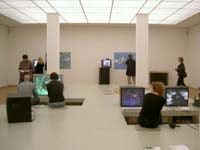 |
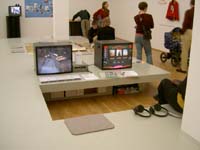 |
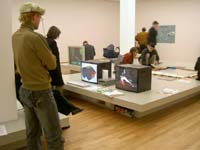 |
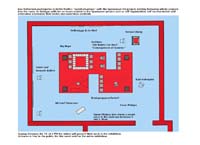 |
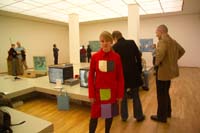 |
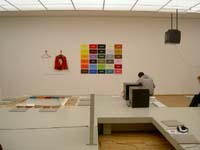 |
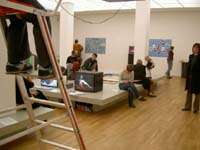 |
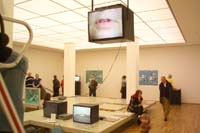 |
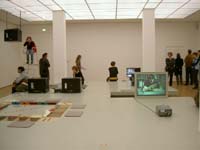 |